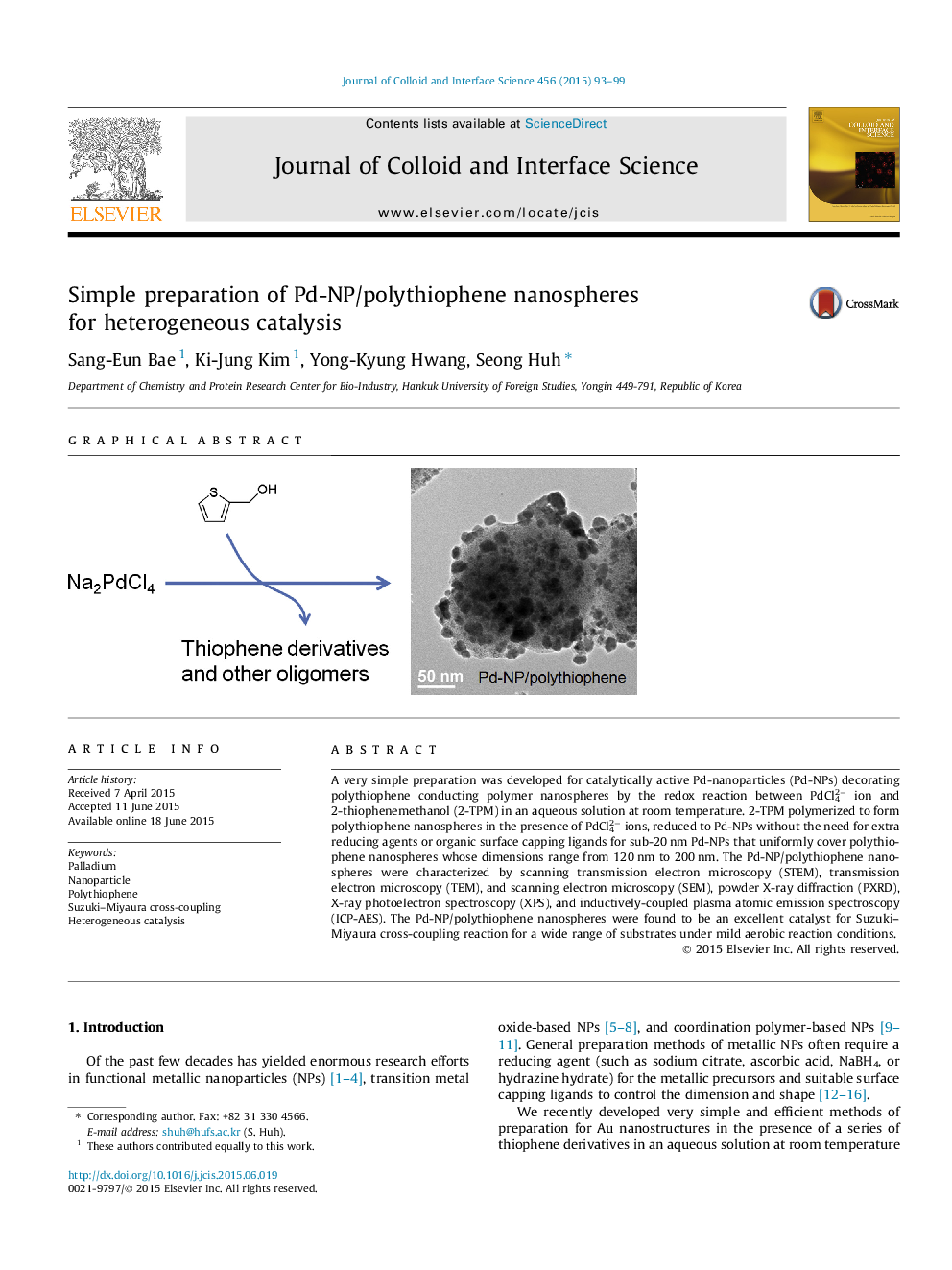| Article ID | Journal | Published Year | Pages | File Type |
|---|---|---|---|---|
| 606742 | Journal of Colloid and Interface Science | 2015 | 7 Pages |
A very simple preparation was developed for catalytically active Pd-nanoparticles (Pd-NPs) decorating polythiophene conducting polymer nanospheres by the redox reaction between PdCl42− ion and 2-thiophenemethanol (2-TPM) in an aqueous solution at room temperature. 2-TPM polymerized to form polythiophene nanospheres in the presence of PdCl42− ions, reduced to Pd-NPs without the need for extra reducing agents or organic surface capping ligands for sub-20 nm Pd-NPs that uniformly cover polythiophene nanospheres whose dimensions range from 120 nm to 200 nm. The Pd-NP/polythiophene nanospheres were characterized by scanning transmission electron microscopy (STEM), transmission electron microscopy (TEM), and scanning electron microscopy (SEM), powder X-ray diffraction (PXRD), X-ray photoelectron spectroscopy (XPS), and inductively-coupled plasma atomic emission spectroscopy (ICP-AES). The Pd-NP/polythiophene nanospheres were found to be an excellent catalyst for Suzuki–Miyaura cross-coupling reaction for a wide range of substrates under mild aerobic reaction conditions.
Graphical abstractFigure optionsDownload full-size imageDownload high-quality image (204 K)Download as PowerPoint slide
